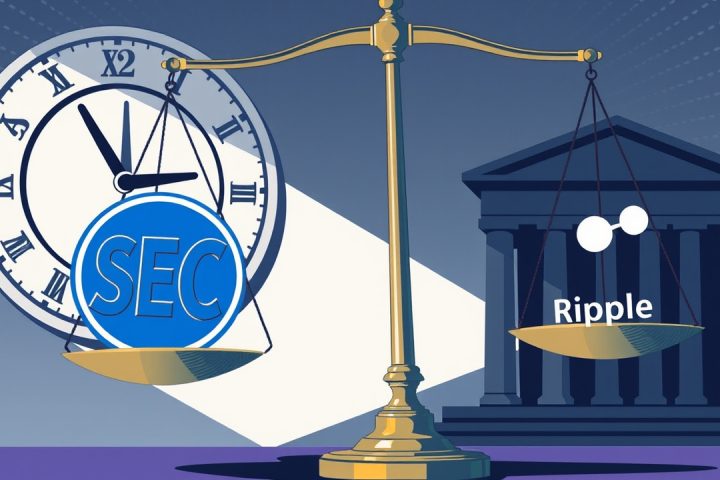Yield-Bearing Stablecoins: A New Asset Class
In the evolving world of digital currencies, a new type of asset has emerged in 2025: yield-bearing stablecoins. Unlike traditional stablecoins, which merely maintain a fixed value in relation to the US dollar, yield-bearing stablecoins also provide holders with the opportunity to earn returns on their assets. However, potential investors should thoroughly understand the mechanics behind these stablecoins, including their revenue generation methods and the legal and tax implications that accompany their use.
Understanding Yield-Bearing Stablecoins
Standard stablecoins like Tether’s USDt or USDC typically do not offer any earnings to those who hold them. On the other hand, yield-bearing stablecoins are structured to distribute profits derived from secure assets back to their owners. These coins fall under three primary categories:
- Treasury and Money Market Fund-Backed Tokens: These stablecoins are collateralized by stable assets like US Treasury securities or bank deposits. The earnings from these investments are shared with token holders, often manifested as an increase in either the token’s value or balance.
- Decentralized Finance (DeFi) Savings Modules: Platforms such as Sky (formerly MakerDAO) allow users to lock their stablecoins in savings configurations. For instance, sDAI, a variation of Dai, yields returns over time based on governance-decided rates.
- Synthetic Yield Structures: Certain stablecoins utilize derivatives strategies to accumulate yields from crypto market funding rates or staking activities. These models promise potentially higher returns, albeit with fluctuating risk.
Earning Passive Income
Investing in yield-bearing stablecoins can lead to passive income, pending a thorough understanding of the following steps:
- Select Your Preferred Type: Depending on your risk tolerance, you could choose tokenized treasury-backed coins for stability, or venture into DeFi protocols for potentially greater, albeit riskier, returns.
- Acquire the Stablecoin: These tokens can be bought on mainstream exchanges — often requiring identity verification — or obtained directly from financial protocols. Note that certain issuers impose geographical restrictions on purchases.
- Maintain Your Holdings or Stake: Once you possess the tokens, simply holding them in a wallet may generate income. Different coins may employ various methods to increase their value.
- Engage in DeFi for Additional Returns: Holders can further boost their earnings through lending platforms, liquidity pools, or structured vaults — but caution is advised due to the added complexities and risks.
- Meticulously Document Your Earning Activity: Earnings from these tokens are usually treated as income by tax authorities upon receipt, necessitating precise record-keeping to avoid issues later.
Examples of Yield-Bearing Stablecoins
It’s important to differentiate true yield-bearing stablecoins from impostors. While USDY from Ondo Finance is an authentic example, being fully backed by reserves and subject to KYC regulations, others such as sDAI offer utility in DeFi ecosystems but aren’t guaranteed by deposits. Furthermore, synthetic models like sUSDe utilize crypto derivatives to achieve stability and yield, although they carry inherent risks.
Legal and Tax Framework
With evolving regulations around stablecoins, the landscape is becoming increasingly complex:
- In the United States: The introduction of the GENIUS Act in 2025 prohibits issuers from paying interest on payment stablecoins, leading to a situation where US retail investors cannot earn passive income from direct stablecoin holdings.
- In Europe: Under the Markets in Crypto-Assets regulation, the European Union also forbids interest payments for e-money tokens, reinforcing their role as digital payment systems rather than savings tools.
- In the United Kingdom: Developing legislation continues to emphasize stablecoins as payment instruments rather than investment vehicles.
Taxation is equally significant; all income generated is subject to taxation upon receipt, with additional complexities arising from capital gains on eventual token sales.
Potential Risks
Investors should remain vigilant about various risks associated with yield-bearing stablecoins:
- Regulatory Uncertainty: Future laws can easily destabilize the market, affecting access and product sustainability.
- Market Volatility: For synthetic yield models, the returns are contingent on fluctuating cryptocurrency markets.
- Operational Caveats: Risks related to smart contracts, governance decisions, and custody arrangements could impact user holdings.
- Liquidity Limitations: Some stablecoins enforce restrictions on redemptions or impose lock-up constraints.
While pursuing yields through stablecoins can be appealing, it’s crucial to approach it with caution, akin to an investment rather than a low-risk savings vehicle. As with all financial decisions, thorough research and consideration of regulations are essential.




